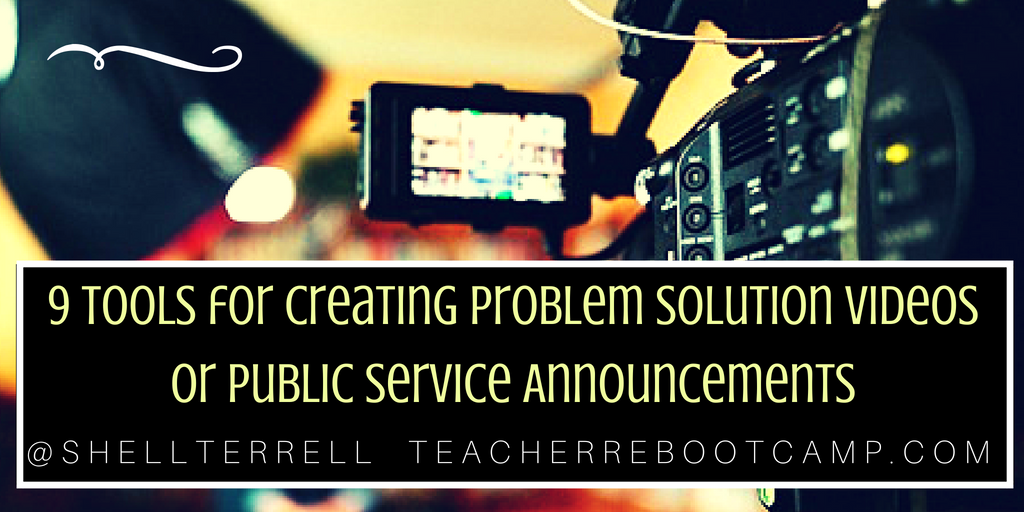“A problem well put is half solved.” – John Dewey
Now that my semester has ended I have some time to share some of my students’ projects. I teach English and students are required to complete at least 4 essays throughout one semester. I add a digital component to each writing, because our students need to learn how to read, write, and conduct research with technology. These are critical skills needed for learners surrounded by technology, which is the focus of my new book, Hacking Digital Learning with Edtech Missions. One of my favorite projects is the problem solution essay and video. Students investigate a problem of their choosing and outline specific steps for others to follow to help solve the problem. Below is a description of the project with resources, a few examples of my students’ videos of their solutions, and recommended video editors.
Get your copy of Hacking Digital Learning, The 30 Goals Challenge, or Learning to Go. Ask me about training your teachers, ShellyTerrell@gmail.com!
Project Details
Students were introduced to this assignment by watching the New York Times OpEd video, Texting While Walking, by Casey Neistat. In this video, Neistat outlines simple steps for people to follow so they don’t text while walk and run into people or cause accidents.
Students were then asked to choose any problem that mattered to them, conduct background research, identify an audience to propose solutions, and outline steps for a solution they came up with. Students used Google Scholar to find at least 4 peer reviewed articles and annotated this research using the free Kami app.
Students were asked to outline a few steps for their solutions just like in Neistat’s video. Students were allowed to use any video editor to create their problem solution videos. I recommend students use the following free online video editors, which have templates and a library of free effects and stock images to help students quickly finish their videos- Biteable, Genial.ly, and Powtoon. Some other video creators, include Kapwing, Wideo, WeVideo, Touch Cast, My Simple Show, and RenderForest.
Student Videos
This video offers steps for ending technology addiction! The student created this video with his own video editor and decided to star in it.
This student video created with Powtoon lists some great ideas to prevent littering, such as playing a basketball game where the trash can is the basket and the litter is the ball.
This student video created with Biteable offers steps to persuade other college students from texting or Snapchatting while driving with apps, such as Safe Drive and Drive Safe Mode.
Safe Driving Jada Hernandez on Biteable.
Assessment
I assess the following criteria:
- Problem- The problem is clearly, concisely, and convincingly presented.
- Solution- The solution is clearly and concisely presented. The steps of implementation are outlined in a clear and concise way.
- Production- The visuals and effects work to present a strong solution. They do not detract from the overall message of the video. The production shows innovation and creativity.
- Respecting Copyright- The student respects copyright by using only Creative Common and Public Domain media, images, and content. Content is properly attributed.
- Grammar/Mechanics/Spelling- The student makes no errors in grammar, spelling, punctuation, and mechanics.
Challenge: Get students to propose solutions for a problem.
Subscribe for FREE to receive regular updates!
Sign up for my new In-Service / Graduate Fully Accredited online courses this summer, Connected Educators: Harnessing the Power of Social Media for Professional Development, and Methodologies for Teaching English to Speakers of Other Languages.








